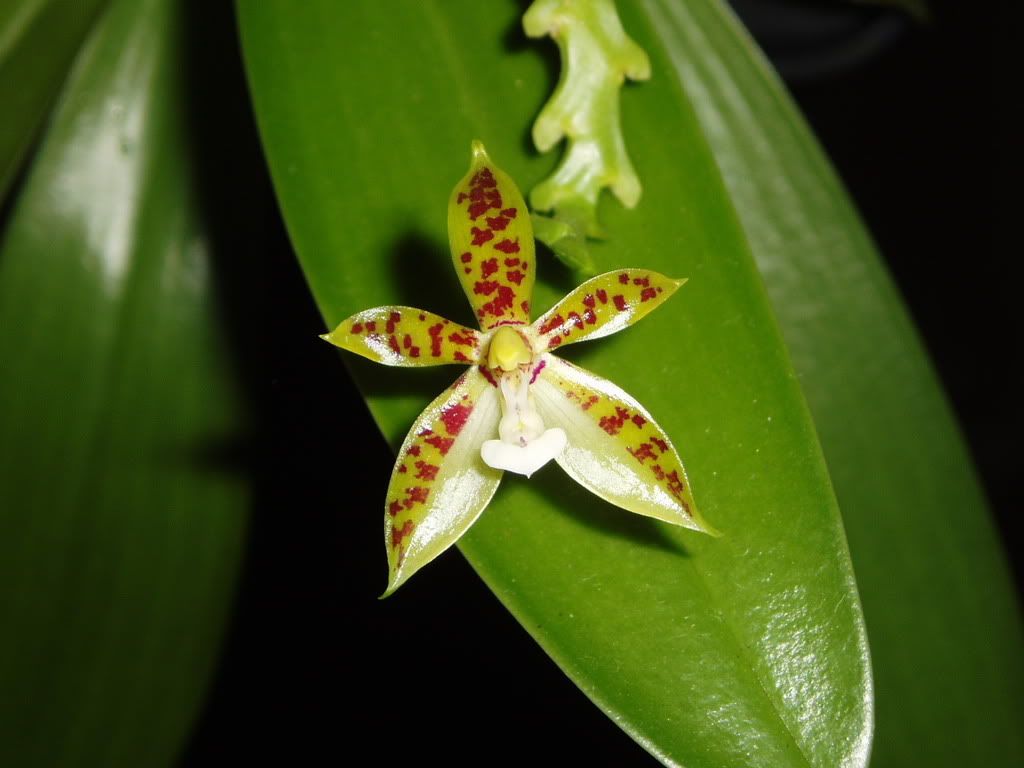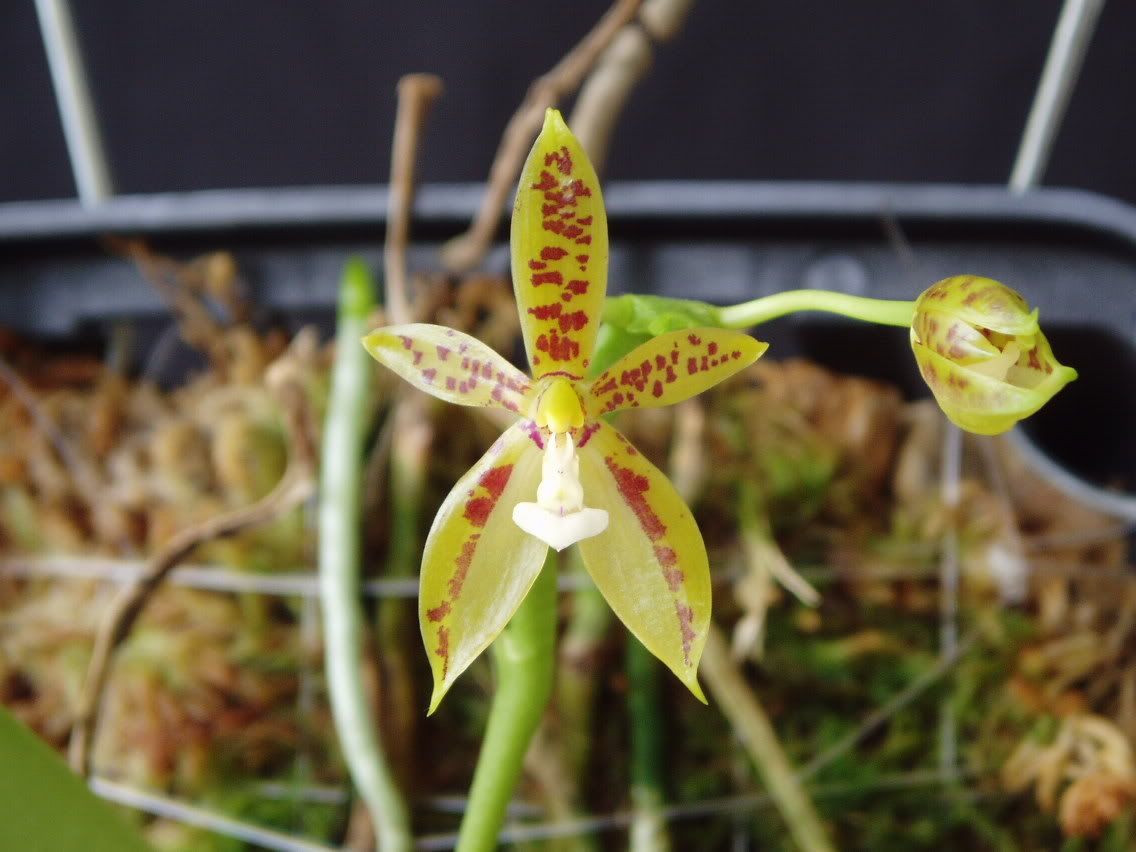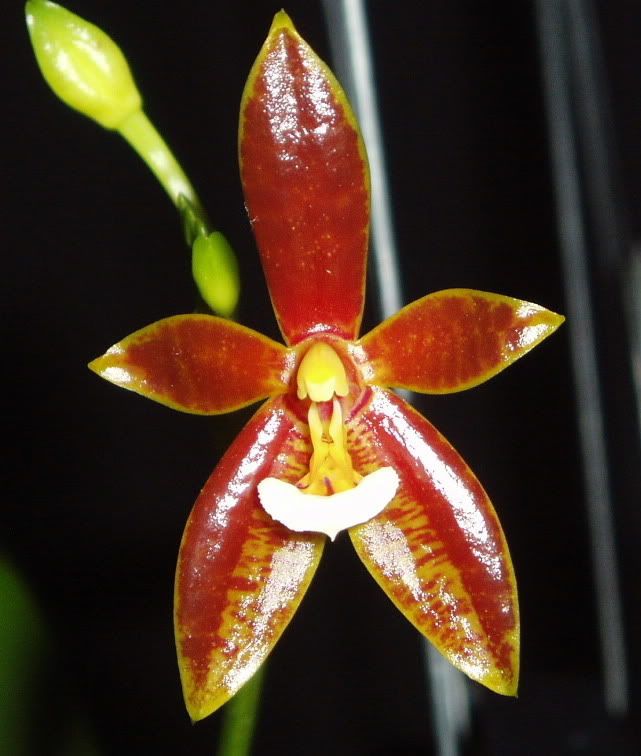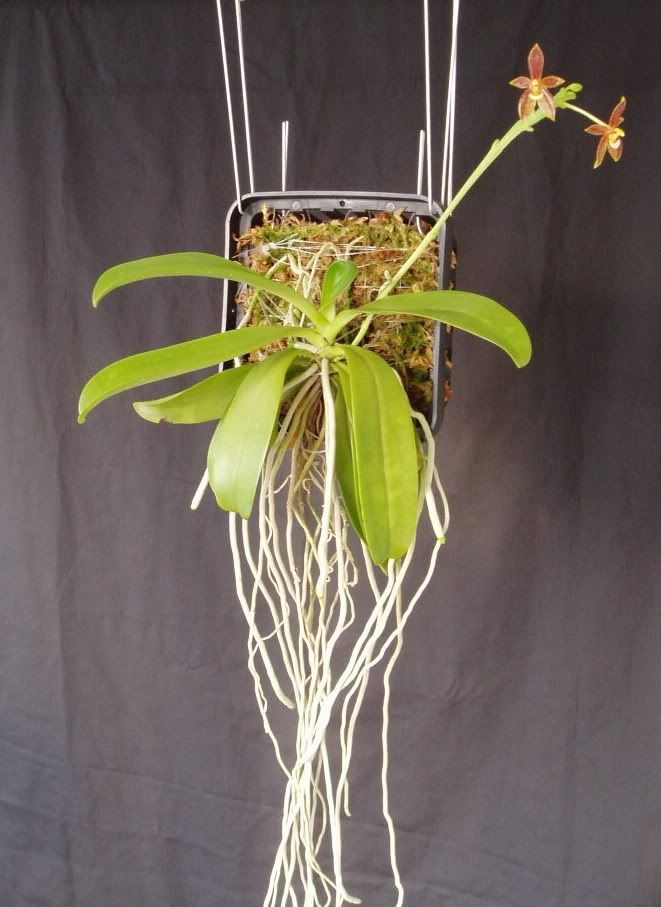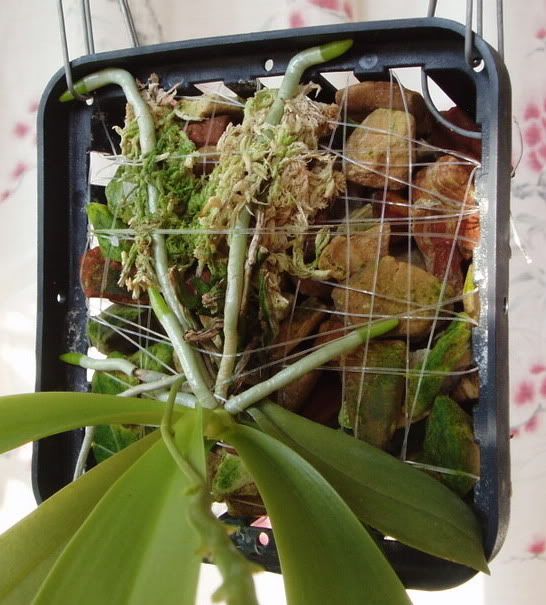June 30, 2007
June 28, 2007
Remounted (4)
The root mentioned in 130607 post, which came into contact with the diatomite, maintains the contact as it grows along the diatomite without any problems. The green growth tip has now gone out of sight as it grows into the medium. A second root has just touched the diatomite and will be observed for its reaction towards the medium.
More time is needed for observation to conclude if this culture (medium and watering regime) is more suitable for this phal cornu-cervi plant than the previous culture. It is still too early to conclude if the few hypothesis are right.
Algae has started to grow on both the sphagnum moss and diatomite surfaces exposed to light. Will be observing how the roots respond to these algae.
On the whole, the plant has been growing well since remounting. It did not shown signs of stress or slowing down due to the remount, and the flower bud is developing well.
More time is needed for observation to conclude if this culture (medium and watering regime) is more suitable for this phal cornu-cervi plant than the previous culture. It is still too early to conclude if the few hypothesis are right.
Algae has started to grow on both the sphagnum moss and diatomite surfaces exposed to light. Will be observing how the roots respond to these algae.
On the whole, the plant has been growing well since remounting. It did not shown signs of stress or slowing down due to the remount, and the flower bud is developing well.
Keikis {Plant 1}
.
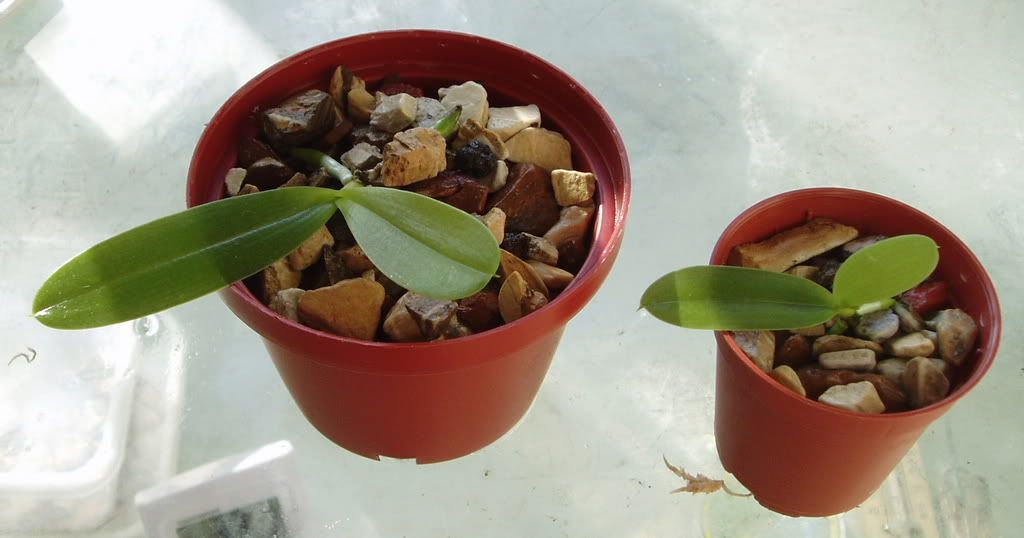
Two keikis appeared on the older of the two flowering spikes somewhere late last year. When the flowering spike died (turned browned and dried up) possibly due to a drastic decrease in watering during the wetter months, the keikis were removed and pushed into the sphagnum moss surface with the mother plant. At the time of removal, the keikis only had one leaf (~ 1 inch long) each. Also, the bigger keiki only had a young root starting to break through the epidermis of the main stem while the smaller keiki had none at all.
They had just grown their second leaf in the recent 2-3 months. An attempt to grow them on the diatomite surface together with the mother plant in the 120507 remount failed as water uptake by the keikis became a problem. The roots were hardly in contact with the diatomite and they dry up too fast after waterings to allow sufficient time for water absorption. Hence, they were removed from the basket a week after the remount and planted in pots of pure diatomite indvidually with daily waterings in the morning.
They had just grown their second leaf in the recent 2-3 months. An attempt to grow them on the diatomite surface together with the mother plant in the 120507 remount failed as water uptake by the keikis became a problem. The roots were hardly in contact with the diatomite and they dry up too fast after waterings to allow sufficient time for water absorption. Hence, they were removed from the basket a week after the remount and planted in pots of pure diatomite indvidually with daily waterings in the morning.
June 26, 2007
June 13, 2007
Plants not Flowering (2)

A flower bud was finally seen developing for plant 1.
The two main factors that could have contributed to the flowering of this plant after one year of vegetative growth are:
Change in culture: The new culture (medium and watering regime) following the remount suits the plant better than the original culture (refer to “Remount” for more). The plant had also been shifted to the lowest rank in the growing area early May, which directly translates to receiving an hour longer of morning sun. The mornings in the recent months are also clearer such that the plant receives unobstructed morning sun almost everyday. Thus, the plant may need more sunlight to bloom too.
Change in weather: This plant was bought in bloom on 01/07/06. The formation of the flower bud at the same period one year later could mean that this plant has a distinctive flowering season and that this season is here. The hotter days (>34 degrees) and night (~28 degrees) could be among the several stimuli for flowering.
Remounted (3)
The flaccid leaf became nearly turgid again a few days after sphagnum moss was stuffed under 2 of the roots. The plant has most probably received enough water with the culture (medium and watering regime) it is given now.
Existing roots are now all growing actively as seen from their fast growth rate and the healthy length (> 1 cm) of the green growth tip. Unlike when the plant was mounted on the sphagnum moss surface, the newer roots are now growing towards the medium. One of these roots that has came into contact with the diatomite (blocked by the plant in the photo) do not stop or slow down growth upon touching the diatomite unlike the original reaction upon touching the sphagnum moss surface. As this root grows, it remains in contact with the diatomite and maintains its cylindrical shape (do not become flat). However, the velamen layer of this root is still young and remains white during watering. I am not sure if this root is aiding in water absorption.
Subscribe to:
Comments (Atom)

